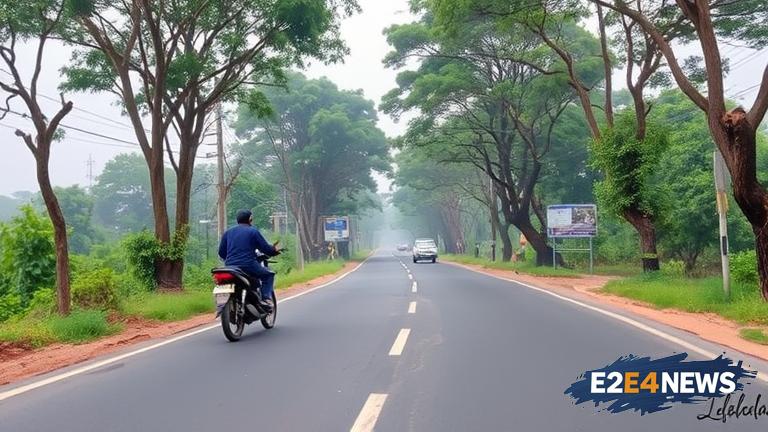The Mumbai to Goa NH66 route is a popular tourist destination, attracting millions of travelers every year. The route spans over 600 kilometers, passing through various towns, cities, and scenic landscapes. Recently, the road conditions on this route have been a topic of discussion among travelers and locals alike. In this article, we will provide a comprehensive update on the current road conditions, route, and travel tips to help you plan your trip. The NH66 highway is a vital connectivity link between Mumbai and Goa, and its condition plays a significant role in determining the travel time and experience. According to recent reports, the road conditions on NH66 have improved significantly, with the completion of various infrastructure projects. The highway has been widened, and new bridges have been constructed to reduce travel time and enhance safety. However, there are still some stretches that require attention, and travelers should be aware of these areas to plan their trip accordingly. The route passes through various districts, including Raigad, Ratnagiri, and Sindhudurg, each with its unique characteristics and challenges. Travelers should be prepared for varying road conditions, including smooth highways, rough patches, and congested city roads. The best time to travel on this route is during the winter months, from October to February, when the weather is pleasant, and the roads are less congested. During the monsoon season, the roads can be slippery, and travel times may increase due to heavy rainfall and traffic congestion. It is essential to check the weather forecast before embarking on your journey and plan accordingly. In addition to the road conditions, travelers should also be aware of the various toll booths and payment systems in place. The NH66 highway has several toll booths, and travelers can pay using cash, credit cards, or digital payment methods. To avoid delays, it is recommended to use digital payment methods, such as FASTag, which can save time and reduce congestion at toll booths. Furthermore, travelers should be aware of the various amenities and services available along the route, including fuel stations, restaurants, and rest stops. These amenities can provide much-needed relief during long journeys and help travelers recharge and refuel. In terms of safety, travelers should be cautious of speeding vehicles, pedestrians, and animals on the road. It is essential to follow traffic rules, wear seatbelts, and avoid driving during peak hours to minimize the risk of accidents. Additionally, travelers should be prepared for emergencies, such as breakdowns or medical issues, by carrying essential items, such as first-aid kits, spare tires, and emergency contact numbers. To make the most of your trip, consider stopping at various attractions and landmarks along the way, such as the scenic beaches, historic forts, and vibrant cities. Some popular stops include the Alibaug beach, the Murud-Janjira fort, and the city of Ratnagiri. These stops can provide a much-needed break from driving and offer a glimpse into the region’s rich history, culture, and natural beauty. In conclusion, the Mumbai to Goa NH66 route is a popular and scenic destination that requires careful planning and preparation. By understanding the current road conditions, route, and travel tips, travelers can ensure a safe and enjoyable journey. Whether you are a seasoned traveler or a first-time visitor, this comprehensive guide will help you navigate the NH66 highway and make the most of your trip.
